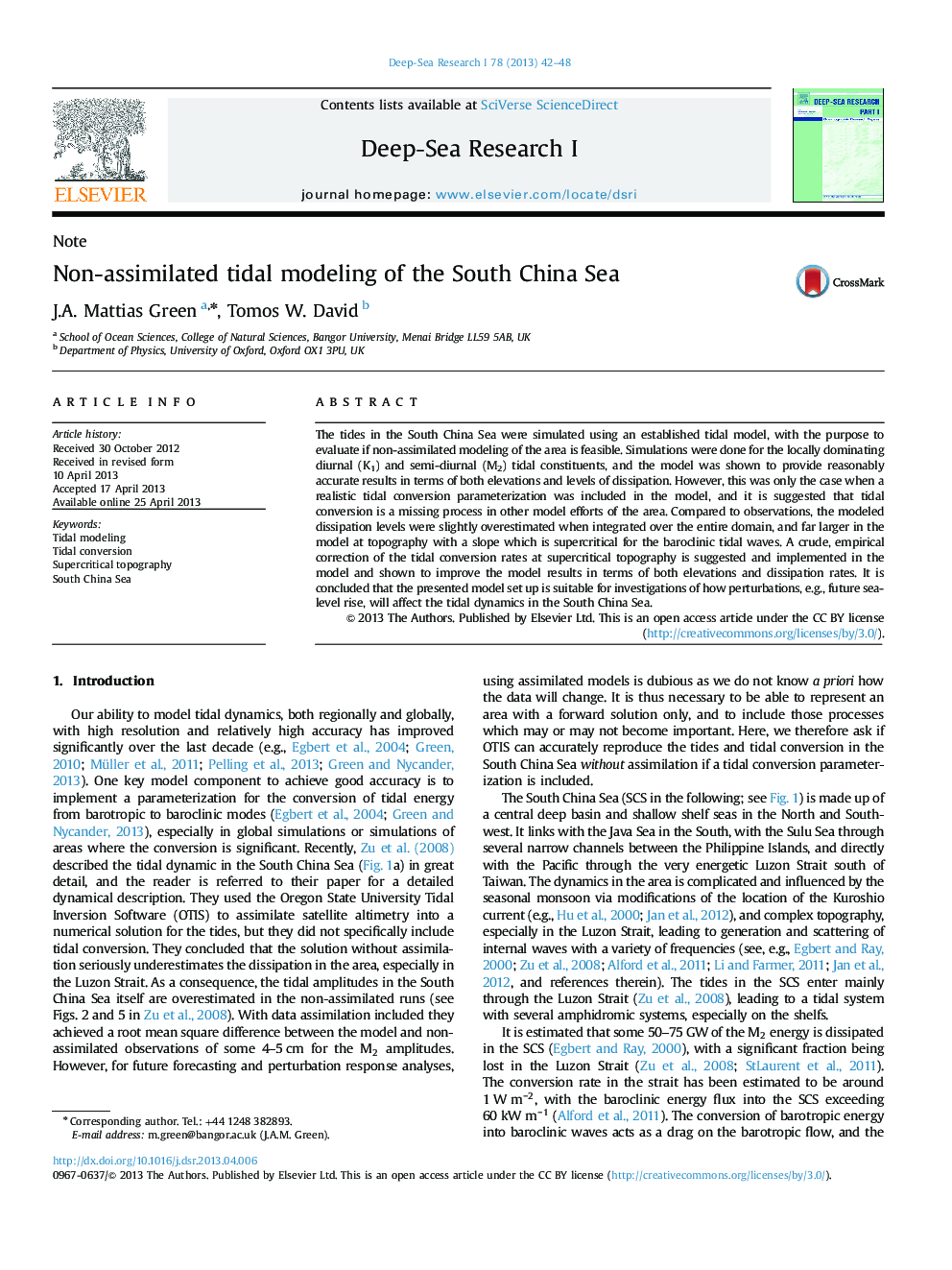| Article ID | Journal | Published Year | Pages | File Type |
|---|---|---|---|---|
| 6383802 | Deep Sea Research Part I: Oceanographic Research Papers | 2013 | 7 Pages |
â¢The tides in the South China Sea are accurately modelled without data assimilation.â¢A tidal conversion scheme is necessary to capture the tidal dissipation.â¢A crude correction scheme for supercritical conversion improved the results.â¢The current model set up is suitable for investigations of tides in a changed climate.
The tides in the South China Sea were simulated using an established tidal model, with the purpose to evaluate if non-assimilated modeling of the area is feasible. Simulations were done for the locally dominating diurnal (K1) and semi-diurnal (M2) tidal constituents, and the model was shown to provide reasonably accurate results in terms of both elevations and levels of dissipation. However, this was only the case when a realistic tidal conversion parameterization was included in the model, and it is suggested that tidal conversion is a missing process in other model efforts of the area. Compared to observations, the modeled dissipation levels were slightly overestimated when integrated over the entire domain, and far larger in the model at topography with a slope which is supercritical for the baroclinic tidal waves. A crude, empirical correction of the tidal conversion rates at supercritical topography is suggested and implemented in the model and shown to improve the model results in terms of both elevations and dissipation rates. It is concluded that the presented model set up is suitable for investigations of how perturbations, e.g., future sea-level rise, will affect the tidal dynamics in the South China Sea.
